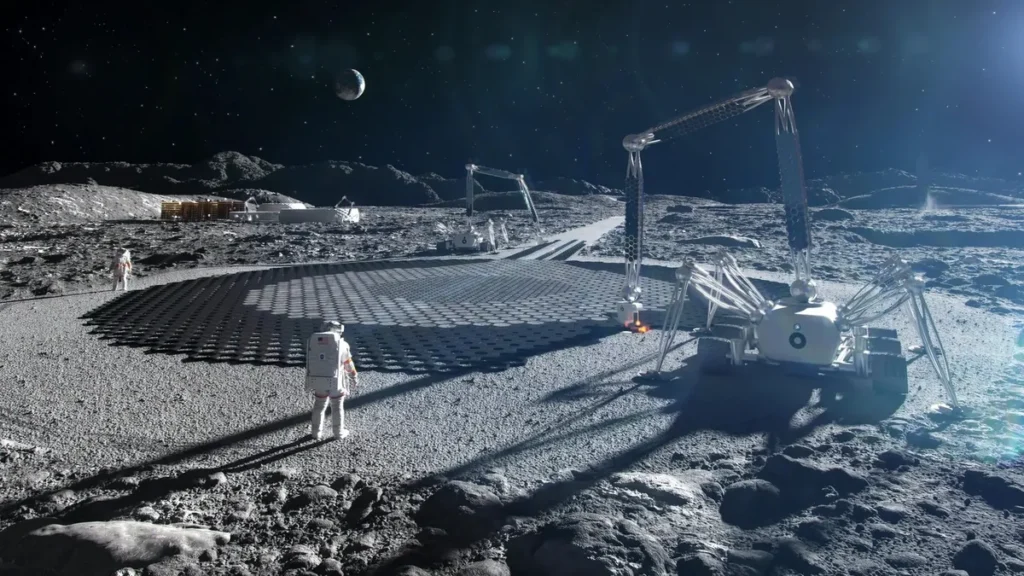PAVER Consortium Successfully Melts Simulated Moondust, Paving the Way for Lunar Roads.
24 October, 2023
In an exciting leap forward for space exploration, scientists are gearing up to utilize cutting-edge laser technology to melt moondust and create roads on the lunar surface. The groundbreaking method, referred to as “tensor holography,” leverages deep learning to generate holograms with remarkable speed and efficiency, opening new frontiers in space travel. Researchers believe this innovative approach has the potential to make commercially available holographic displays a reality, revolutionizing not only lunar infrastructure but also fields such as virtual reality, 3D printing, and medical imaging.
The PAVER Consortium, at the forefront of lunar surface development, recently executed a series of experiments using a 12-kilowatt carbon dioxide laser to melt simulated moondust into a solid, glassy surface. The results were nothing short of remarkable, as scientists successfully demonstrated that lunar dust could be transformed into robust paving slabs. These slabs hold the key to constructing roads on the Moon, significantly enhancing transportation across its vast and rugged landscape.

The potential of this innovative approach extends beyond lunar roads. While the immediate application is in lunar surface infrastructure, this breakthrough also carries immense promise for other domains. The ability to melt and manipulate lunar dust has the potential to reshape how we explore space, as it opens up new possibilities for establishing bases, supporting future lunar missions, and facilitating human colonization of the Moon.
Moreover, the technology can have a spillover effect, with applications that stretch into various terrestrial and technological domains. From enhancing the realism of virtual reality experiences to refining 3D printing processes and elevating the precision of medical imaging, the ripple effects of this innovative method are far-reaching.
However, before this visionary concept becomes a full-fledged reality, further research is imperative to address potential challenges and evaluate the environmental impact of lunar surface alterations. Balancing the need for advanced lunar infrastructure with responsible lunar stewardship will be a key consideration as this technology progresses.
As scientists continue to push the boundaries of space exploration, this pioneering endeavor marks a significant step toward making the Moon more accessible and navigable. With the prospect of lunar roads on the horizon, the cosmos becomes a canvas for human ingenuity and innovation, reaffirming our commitment to exploring the unknown.
Resources:
1.https://www.sciencefocus.com/news/laser-moondust-lunar-roads
2.https://www.newscientist.com/article/2397359-we-could-make-roads-on-the-moon-by-melting-lunar-dust/
3.https://spaceref.com/science-and-exploration/how-to-make-roads-on-the-moon/
4.https://cybernews.com/news/moon-exploration-roads-moondust-european-space-agency/